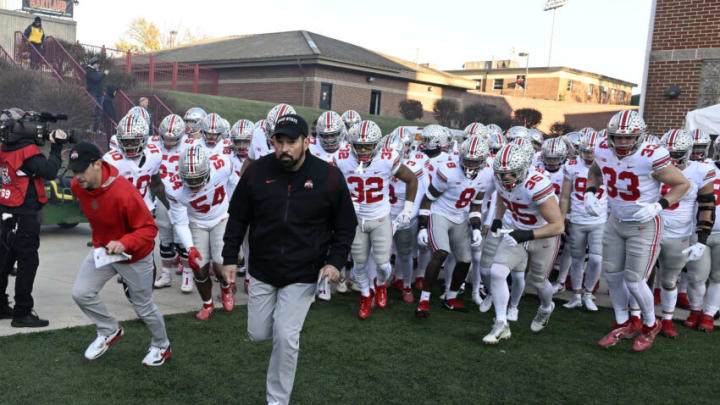One of the more important characteristics of any long-term successful football coach in Division I college football is their ability to adapt. They need to not only adapt on a year-by-year basis with their own personal offensive and defensive schematic philosophies due to different personnel, but with the ever-changing landscape of college football, they also need to be able to adapt to changes outside of the white lines. The Ohio State football program is no different.
Ryan Day has shown this ability to be able to adapt. It is clearly seen in his approach to the transfer portal. When Day took over as head coach in 2019, the transfer portal was in its infant stages. As you may recall, when Justin Fields transferred from Georgie to Ohio State, he still needed to get a hardship waiver approval from the NCAA before he would be eligible to play without sitting out for a season.
It is true that the NCAA was indeed granting said waivers much easier than they had in the past, but the one-year free transfer rule wouldn’t take effect until April 2021.
Day’s approach with Fields was to find the best man to run his offense. Despite being Urban Meyers chosen signal caller, Tate Martell was not who Day wanted. So Day went after Fields and left Martell with no other option but to appeal to the NCAA for a hardship waiver himself. This was a very strategic move by Day, but it showed his ability to have a killer instinct.
Day’s approach to the transfer portal has always been to be very strategic. For instance, in 2019 Ohio State had quarterback Gunnar Hoak transfer in to add experience and depth as a backup quarterback while Rutgers offensive guard Jonah Jackson became a Buckeye to fill a giant hole on the offensive line.
The next season, Day accepted only one transfer in the form of running back Trey Sermon, again to fill a big need. In 2021, it was more of the same as only kicker Noah Ruggles transferred in. Last season only two transfers came aboard, defensive back Tanner McCalister and running back/linebacker Chip Trayanum.
With so much of the roster flipping over from year to year in college football and seeing the success other programs have had in quick turnarounds thanks to the transfer portal, there is no reason why Day’s “let’s not upset the locker room,” approach needs to be followed. He has obviously adapted.
This season Ohio State accepted seven notable transfers via the portal: safety Ja’Had Carter, backup quarterback Tristan Gebbia, offensive lineman Victor Cutler, cornerback David Igbinosun, offensive tackle Josh Simmons, defensive lineman Tywone Malone, and wide receiver/defensive back Lorenzo Styles Jr.
Not every one of these transfers who now call the Ohio State football program home is going to see significant playing time this season, which is an obvious change in approach from previous seasons. In fact, a handful of these players can be viewed as projects; players who they see potential in but will need to be developed.
Could this upset the locker room given the fact that someone who has been with the program for three or four seasons may now be passed over by someone who has transferred in? In short, yes. But here in lies the change in philosophy and how Day has adapted.
Ryan Day needed to recapture his killer instinct. Just like when he went after Fields knowing that it could possibly cause Martell to leave the program, he has taken that same aggressive approach and applied it to the entire roster. To hell with backup players’ feelings. If you don’t like it, get better.
Day’s number one job as head coach of the Ohio State football team is to win games, and if that means he takes seven or more guys from the transfer portal, then so be it. As Urban Meyer used to say, “That’s life in the big city.”
